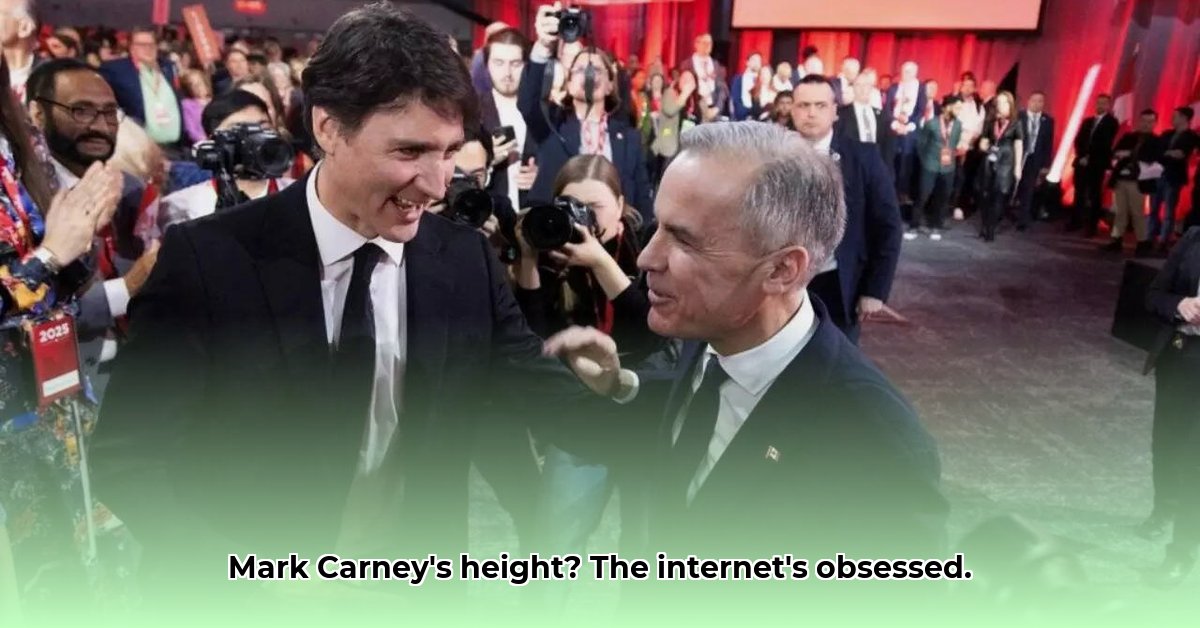
The Curious Case of Height in Canadian Politics
Why do seemingly trivial details, like the height of a political leader, captivate the internet? Online searches for "Mark Carney height," and similar queries regarding other prominent Canadian figures like Justin Trudeau, reveal a much deeper societal fascination with image and perception. This isn't simply idle curiosity; it's a window into how we unconsciously assess leadership and how readily available online information shapes our opinions. The readily available data fuels the obsession. But is the information itself the point, or is it a stand-in for something more profound? For more on Carney's height, see this site.
The internet, with its instant accessibility and comparative ease, amplifies this phenomenon significantly. What was once a hushed office conversation is now a readily available online debate, propelled by social media and the viral nature of online commentary. This online amplification transforms a simple query into a running commentary on our modern political climate—a microcosm of how we judge information in the digital age.
Height, Power, and the Psychology of Perception
The association of height with power and authority is deeply ingrained in our collective consciousness. This isn't arbitrary; throughout history, many prominent leaders have been tall, creating a subconscious link that subtly impacts our judgments, even if we're not consciously aware of it. This unconscious bias is amplified in the digital age, where readily accessible information allows for quick and easy comparisons between political figures.
Dr. Anya Petrova, Professor of Social Psychology at the University of Toronto, notes, "Height serves as a visual shorthand—a readily processed cue that our brains associate with dominance and leadership. This cognitive shortcut, while often subconscious, can significantly influence initial impressions and perceptions of authority."
While Mark Carney's height is often reported around 1.75 meters and Justin Trudeau's around 1.88 meters, is this a true reflection of their leadership abilities, or is it a reflection of something else? Does the difference in height automatically translate to a difference in effective leadership? The answer, as we will explore, is far more complex.
The Digital Amplification of Bias
The ease with which we can now compare the heights of political leaders online highlights another key aspect of this phenomenon: the internet’s role in amplifying existing societal biases. The constant stream of information, often presented in a visually driven format, reinforces these preconceived notions. This readily available data is not neutral; it fuels the obsession and often contributes to its perpetuation. Algorithms, designed to cater to popular trends, further exacerbate this effect.
"The speed and reach of online information drastically changes the nature of political discourse," explains Dr. David Chen, Professor of Political Science at McGill University. "Height, once a minor detail, becomes amplified into a readily available talking point, shaping both public and media narrative."
Beyond the Inches: Deconstructing the Height Obsession
The obsession with height – particularly in the context of political leaders – likely reflects a deeper societal anxiety, a desire for easily digestible markers of competence in a complex world. In a time of immense global uncertainty, focusing on straightforward physical traits might provide a sense of control or simplified evaluation. But this is a simplification – a misleading shortcut—obscuring the far more nuanced realities of leadership. This is not to diminish the role of first impressions, but rather to contextualize how easily these impressions can be shaped – and misconstrued – in a digital age saturated with information.
Moving Forward: Responsible Reporting and Critical Consumption
The future requires a shift in perspective. Political campaigns must engage with the reality of online discourse, strategically emphasizing substantive policy discussions and subtly addressing height-related inquiries where necessary. Media organizations need to prioritize responsible reporting focused on leadership skills and political platforms over trivial physical characteristics. Most importantly, voters must become more discerning consumers of online information, recognizing the biases embedded even in casual online discussions. By acknowledging and critically examining these biases, we can cultivate a healthier, more informed political discourse.
A Hypothetical Comparison: Height, Perception, and Political Success (Revisited)
| Leader | Height (m) | Perceived Leadership | Electoral Success | Notes |
|---|---|---|---|---|
| Mark Carney | 1.75 | Moderate | N/A | Former Governor of the Bank of Canada. Success in his field, but not elected office. |
| Justin Trudeau | 1.88 | High | High | Current Prime Minister. A successful election campaign. |
| Hypothetical Leader A | 1.92 | Very High | Moderate | Charismatic, but controversial policies hampered electoral success. |
| Hypothetical Leader B | 1.65 | Low | High | Exceptional political skills offset any perceived height disadvantage. |
This table serves as a reminder: height is but one small piece of a much larger puzzle.
Key Takeaways
- The public interest in the height of Canadian political figures reflects a broader societal obsession with appearances and their perceived connection to leadership.
- While no direct correlation exists between height and electoral success, the persistent association of height with power subtly influences perceptions.
- Online platforms amplify this scrutiny, contributing to a culture where superficial attributes are readily discussed and misrepresented.
- Media coverage and social media shape public perception, often focusing on height as a shorthand for assessing leadership.
- Responsible reporting and critical information consumption are crucial for a healthier political discourse.
This ongoing conversation is constantly evolving. What's clear is that the fascination with height speaks volumes about our society's interaction with information and the ways we form opinions, especially in the highly saturated digital age.